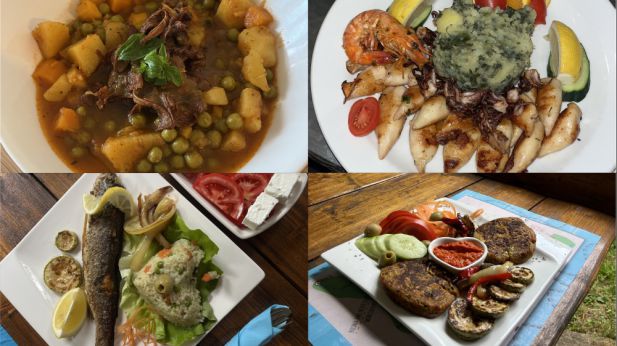
Northern Delicacies
The northern region is renowned for its forest berries, such as blueberries, raspberries, and strawberries, as well as herbal teas and wild mushrooms. Local specialties include sour cream (kajmak), yogurt, and various cheeses from cows and sheep, each with a unique flavor depending on the household. Trsa, the highest pasture in Durmitor, produces the finest kajmak, naturally flavored with wild herbs. Popular dishes include stewed sauerkraut, lamb cooked in milk, peppers in milk cream (kajmak), and the famous Durmitor steak. Montenegrins are predominantly meat-eaters, with various meats served for lunch and dinner.
The continental area prominently features fish from Skadar Lake, including carp, trout, and eel, which can be smoked, fried, or served in salads. Local specialties also include smoked ham, cheese in olive oil, sausages, and smoked mutton ham. The Podgorica area is known for its cabbage leaves stuffed with minced meat and rice, as well as carp with risotto and dried plums.
The Mediterranean region offers a holy trinity of seafish, homemade olive oil, and wine. Olive oil forms the basis of every meal, accompanying fish, salads, vegetables, and sauces, often flavored with garlic and parsley.
Montenegro produces both red and white wines, but its red wines are particularly notable. Vranac is the most well-known and highly drinkable red wine, with a fine ruby color and Mediterranean character. Vranac Pro Cordem is marketed as beneficial for the heart due to its high level of prothoanthocyanidol. Merlot and Krstac, a pleasant dry white wine, compete with local Chardonnay and Sauvignon varieties.
Montenegro’s national liquors are various kinds of brandies (rakija). Loza, a white grape brandy, symbolizes Montenegrin hospitality and goodwill. The more upscale version, Kruna, is distilled in copper stills using vine twigs and wood, while the Podgorica brand is known as Crnogorski Prvijenac. Plum brandy (sljivovica) is also well-known.
Rakija is served universally, whether with friends and family or as an aperitif with desserts. It’s a staple at birthday parties, weddings, family celebrations, and other special occasions, and is also used as a base for cocktails.
Montenegro’s beer scene is thriving, with several local breweries producing a variety of beers that have won prizes at international fairs and exhibitions. Some of these beers have become national favorites.
Montenegro’s culinary landscape is as diverse and beautiful as its physical one. From the hearty dishes of the north to the fish-centric meals of the coast, and the delightful beverages that accompany them, Montenegrin food and drink offer a truly unique and unforgettable experience. Whether you’re enjoying a traditional meal cooked under coals or sipping on a glass of Vranac, the flavors of Montenegro are sure to leave a lasting impression.
Embark on this culinary journey and experience the true taste of Montenegro. Your palate will thank you!